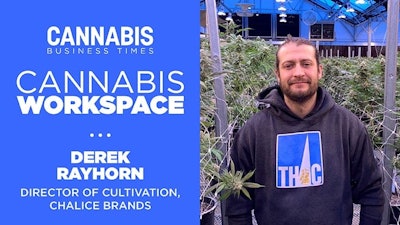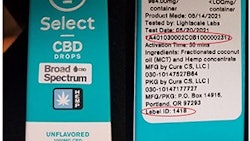
Indoor, outdoor, greenhouse or a combination: Greenhouse
Can you share a bit of your background and how you and your company got to the present day?
I’ve been growing cannabis for nearly two decades. I started my commercial cannabis career in Arizona when they passed their medical laws and was there for four years, making a reputation growing top-shelf cannabis. During this time, I learned to listen to the plants, selecting the best match of genetics for the environment.
My business partners and I were recruited to work in Oregon by an investor looking to establish a cannabis brand and manage the business. Months before Oregon started issuing recreational licenses, we created what would soon be award-winning flower. I worked for that company for five years and then left for new opportunities with Chalice Brands at the company’s greenhouse cultivation facility, Bald Peak Farm. Over my career in the cannabis industry, I’ve maintained my focus on the plant, the culture and the cannabis community. Bringing this focus into Bald Peak Farm’s state-of-the-art facility has allowed us to grow our first of many award-winning genetics.
What tool or software in your cultivation space can you not live without?
Our environmental control system, by Wadsworth Controls, allows me to remotely monitor and control our greenhouse environment—I can adjust fans, lights and other environment settings all from my laptop, which helps me ensure the perfect growing environment for our cannabis plants, 24/7. Having this system gives me the most peace of mind.
What purchase of $100 or less has most positively impacted your business in the last six months?
I purchased a $15 misting system from Home Depot, which helps me keep the humidity higher in one of our greenhouses. I could have spent thousands on a professional fogging system, but this inexpensive product does exactly what I need it to. Just last night, the outside humidity on top of Bald Peak was only 19%. By running this misting system, I was able to keep my humidity at 60% in our vegetation house, which helped our plants stay happy and healthy.
What cultivation technique are you most interested in right now, and what are you actively studying (the most)?
I’m actively studying living soils. As our company expands, I believe that growing cannabis in living soil is the way to go. Though this requires a little more work and attention to detail, this also eliminates the salt-based fertilizers that can have a negative impact on our environment.
How has a failure, or apparent failure, set you up for later success? Do you have a “favorite failure” of yours?
There have definitely been some failures over the years. At the beginning of my commercial cannabis career, I learned to double check my environmental parameters and lighting schedules on a regular basis. The first indoor grow I worked at had a glitch in our lighting controller, which kept our lights in our flower room on for 24 hours a day. Since cannabis is a photoperiodic plant that requires light and dark cycles to flower, this caused some issues. I’ve learned that technology is great but needs to be checked frequently, just in case something happens. Now, I tend to catch other potential issues much sooner and avoid problems.
What advice would you give to a smart, driven grower about to enter the legal, regulated industry? What advice should they ignore?
Hold on tight! This industry is still very new and can be a wild ride for some. Companies grow quickly and can fail quickly too. Learn from your mistakes—be flexible and willing to try new things. You shouldn’t necessarily ignore any advice, but listen carefully and determine what’s best for you and your operation.
How do you deal with burnout?
Take time to yourself, when you can, to recharge in whatever way works for you. It’s easy to get burnt out working farmer hours; 12-plus hour days, six or seven days per week. When you see a break in the schedule, get away from the garden. My best advice is to train your employees to a level where you can trust that all will be taken care of in your absence.
How do you motivate your employees/team?
If possible, it’s important to switch things up for them. If you sense that a trimmer is getting burnt out on trimming, then try and get them in the garden for a few shifts. Cross-train employees to be knowledgeable in several areas. Learning new things will keep employees interested and motivated.
Also, acknowledging challenging work with something simple, like buying lunch for everyone or extending lunch break, is an easy way to do this. For my crew, pizza is the big motivator. It’s important to create space where everyone can sit down together and discuss future plans and new opportunities, both during and outside of work.
What keeps you awake at night?
High winds, snowstorms and potential power outages keep me awake at night. Bald Peak Farm sits at 1,600 feet above sea level and is the highest elevation grow in the Willamette Valley. Weather at this location can be extreme, and we have wildfires, ice storms and 70 mph winds that can impact our greenhouses. Luckily, we have systems in place to keep our plants from suffering.
What helps you sleep at night?
Knowing that I have a crew that will do whatever it takes to grow our flower.
























